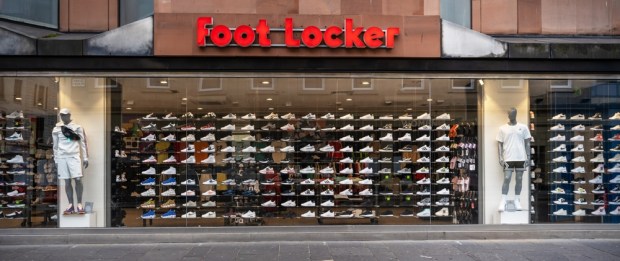Foot Locker Reports Rough Q1 as It Readies New Formats, Loyalty and Omnichannel Strategy

Foot Locker struggled in the first quarter amid wide-ranging changes to the athletic footwear and athleisure retailer’s physical footprint, brand mix, digital and omnichannel efforts.
As part of the ‘Lace Up’ strategy announced in Q1, Foot Locker President and CEO Mary Dillon told investors and analysts on its Q1 earnings calls Friday (May 19) that “The underlying principle of our plan is that with the right focus, investments, and capabilities we’ll more fully participate in the rapid secular growth as a category, and return our business to sustainable growth following this year, our reset year.” Comp-store sales fell a steep 9.1% in Q1.
Sharing specifics of key elements of its Lace Up rebound strategy, Dillon focused on store base transformation, improving omnichannel presence, and upgrading digital selling and experience for both consumers and “Stripers” — code for Foot Locker sales associates — who have been equipped with new handheld digital devices that give associates better inventory visibility.
Of the headwinds the retailer faced in Q1, Dillon noted that “we were seeing steep comp declines given a number of factors [including] our reset with Nike, our transition of the Champs banner, our shutdown of the Eastbay banner, and a 10% decline in average tax refunds which have an outsize impact on our business, given we over-index to a lower income consumer.”
Foot Locker’s “Nike reset” was triggered by Nike reducing its reliance on retail and taking more of its business direct-to-consumer. However, Dillon recited the performance of various Nike-branded footwear, saying, “We did see strong results on a relative basis in our Nike and Jordan basketball business. Retro sell-throughs albeit at reduced quantities were very good.”
Meanwhile, sales of Foot Locker private label brands led by growth in Locker and Cozy both rose over 50% in the quarter, increasing from 7% to 11% of total apparel sales.
As the brand moves away from a traditional reliance on stores in enclosed malls to its larger format Foot Locker Community and Power stores, Dillon said, “Off-mall now represents 35% of our North America square footage across all banners from 31% last year heading towards a target of over 50% by 2026. She said, “both new formats and off-mall doors are out-comping the rest of our fleet, which continues to give us conviction in the strategy,” and added Foot Locker closed 35 underperforming stores in Q1 “to focus on our higher quality locations.”
In consumer engagement and loyalty, the chain expanded its FLX loyalty program to Canada, where it will be piloting its revamped loyalty program “later this year.” She said roughly 25% of Q1 sales came from existing loyalty program members.
“By launching our new [loyalty] program next year we continue to expect to drive improvement and sales penetration of loyalty to 50% by 2026 and 70% long term,” she said.
The chain is developing and testing new CRM capabilities via drive frequency and retention. Examples given included recommendations based on past purchases and notifications that products in online shopping carts are selling fast.
On what she called “the omnichannel imperative,” Dillon noted a focus on better harmonizing physical and digital channels. She pointed to improving conversion through enhancements, including adding more calls to action, improved product recommendations, technical enhancements to the site and app.
“While our digital sales penetration for the quarter was flat versus last year excluding East Bay, we saw trends improve through the quarter with our April digital percent of sales ending up year over year and above our plan, putting us on a strong early path towards our goal of reaching 25% by 2026, up from about 16% today,” she said.
Dillon added, “Changes that begin to remove friction points for our customers and improve the digital experience we provide from improved search Add to Cart and the payment experience have all already improved, resulting in conversion improvements and NPS growth.”
However, Chief Commercial Officer Frank Bracken noted, “Digital penetration of total sales was 16.3% down from approximately 18% last year on a reported basis but flat to last year excluding Eastbay.”
Bracken said Foot Locker has identified three pilot locations “for a new Foot Locker store the future concept that we plan to open next year. Together with swift progress on our store design workstreams, we will launch our first prototype store in early Q1 next year.”
The store’s future concept is being designed to deliver what he called “an omni- connected retail experience with stripers who will provide elevated service and product knowledge providing learnings that we can apply to the rest of the fleet.”
